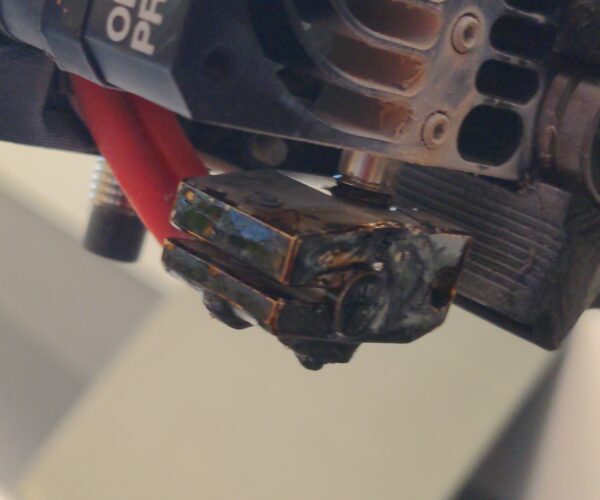RE: Cleaning nozzle?
What you picture is not technically just the nozzle. That's the bit that screws in the bottom that you can see partially in your pic. You picture the hotend as a whole.
You really should learn the names of all the parts as it will make asking for help easier in the future. The larger lump of metal that ties it all together is called the heat block. The bit sticking out the top is the heatbreak. The heatbreak connects to your heatsink. Its the heatsink that is covered in white residue. Your fan can't be seen in the picture.
Plastic on top and coating the heatblock like that indicates either A- you have had a blob of plastic around it after a part got loose or B, you have a slight leak between the heatbreak and nozzle. A leak lets plastic seep up and down the threads in the heatblock and leads to it coating it like pictured. This plastic then bakes on and burns. It also often results in little bits dripping down onto your prints. So if you have little black spots on your models you know what will be causing it.
A leak means the nozzle/heatbreak seal hasn't been tightened up fully or has worked its way loose. So it should be cleaned up, re-assembled and tightened to spec at full temperature. If it isn't then you will shortly be back to the same state its in now. There are plenty of threads about how to do that and Prusa should have a knowledge base article on doing that for the mini.
As for cleaning it, the usual is to heat it up and then very carefully use a brass wire brush to remove the softened plastic. If you use the printer itself to heat it up then You have to be very careful not to contact the heater cartridge or thermistor as you could short the wires (which can damage your main board electronics which is a VERY expensive mistake). You also have to be careful of the wires themselves.
The other option is to heat it up with a blue flame lighter. Then remove with the brass wire brush once the plastic is soft. Some people use a stiff toothbrush but you then have to be careful not to melt the bristles. A nylon bristled brush can also be used if you can find one.
